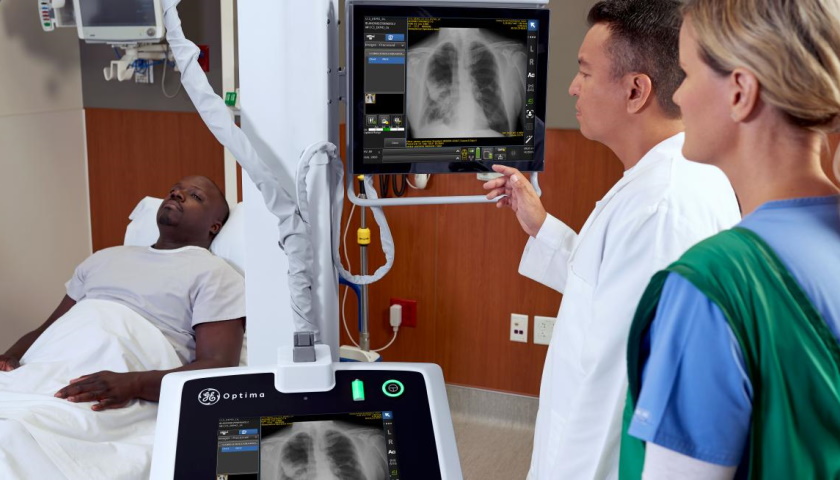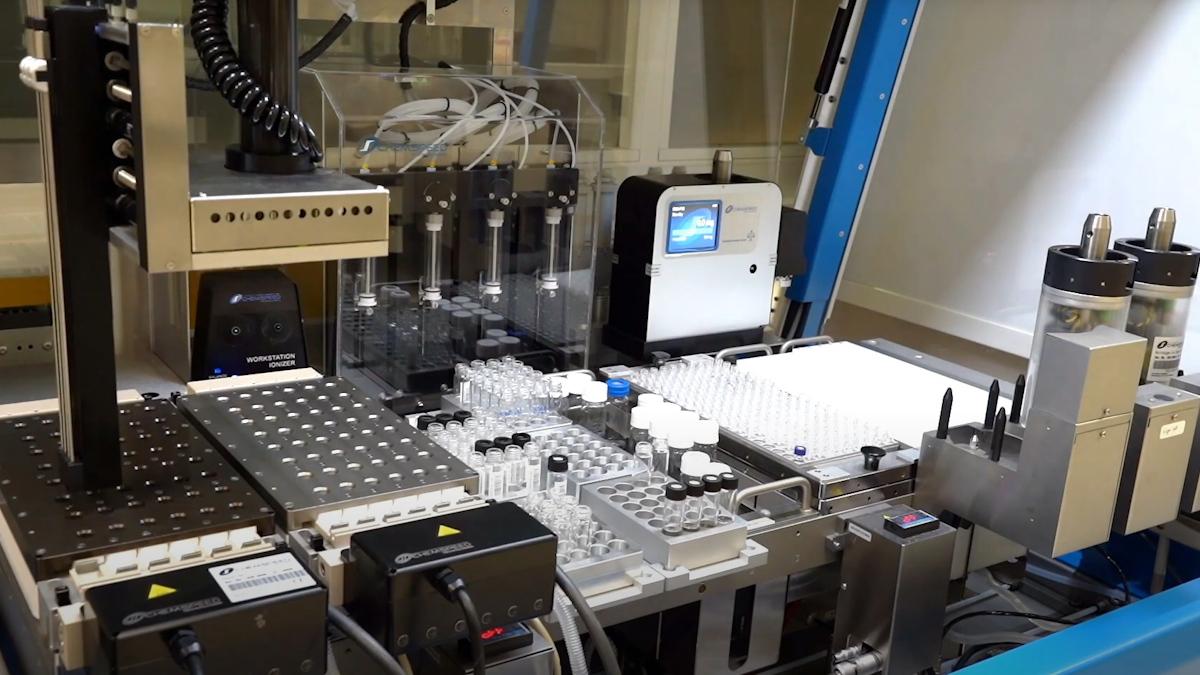GE Healthcare's AI tool helps clinicians intubate patients accurately and safely

An artificial intelligence tool developed by GE Healthcare twinned with a mobile X-ray device can help the placement of endotracheal tubes (ETTs), a necessary step for COVID-19 patients who require ventilation.
The new tool – part of GE’s Critical Care Suite 2.0 – helps bedside staff and radiologists assess patients before intubation and make sure ETTs are positioned correctly which should reduce complications.
It also includes algorithms that help radiologists triage and prioritise critical cases, and automates processes to help cut average review times for X-rays, which can currently take up to eight hours even when flagged as urgent.
The company says up to a quarter of patients who are intubated outside of the operating room have misplaced ETTs on chest X-rays, which can lead to hyperinflation of the lungs, collapsed lung (pneumothorax), cardiac arrest and death.
GE Healthcare says the new tool is of particular value at the moment as the world is battling the coronavirus pandemic, as this has massively increased the demand for intubation and ventilation.
Overall, around 45% of all patients admitted to intensive care need to be intubated, and it is estimated that between 5% and 15% of COVID-19 cases require intensive care surveillance and intubation for ventilatory support.
Using the AI suite, ETTs are automatically identified in chest X-ray images, providing feedback to the clinician on positioning within seconds and warning them if it hasn’t been place correctly. It will also quickly detect complications like pneumothorax, and can automatically send an alert to a radiologist along with the x-ray images for review.
“Seconds and minutes matter when dealing with a collapsed lung or assessing endotracheal tube positioning in a critically ill patient,” said Dr Amit Gupta, director of diagnostic radiography at University Hospital Cleveland Medical Centre in the US.
The algorithm has already shown its worth in COVID-19 cases, identifying cases of pneumothorax as well as barotrauma – tissue injury caused by a pressure-related change in body compartment gas volume, he added.
“Today, clinicians are overwhelmed, experiencing mounting pressure as a result of an ever-increasing number of patients,” said Jan Makela, president and CEO, Imaging, at GE Healthcare.
“The pandemic has proven what we already knew – that data, AI and connectivity are central to helping those on the front lines deliver intelligently efficient care.”
Critical Care Suite 2.0 and its five quality algorithms were developed using GE Healthcare’s Edison platform and are deployed on its AMX 240 mobile X-ray system.













